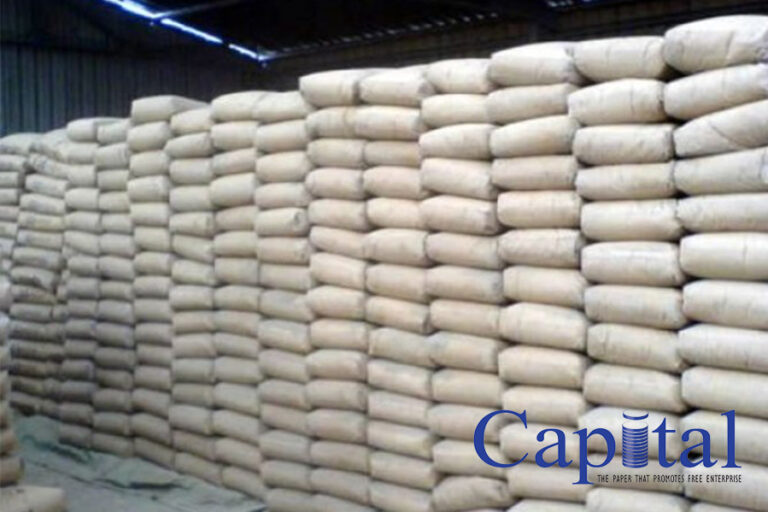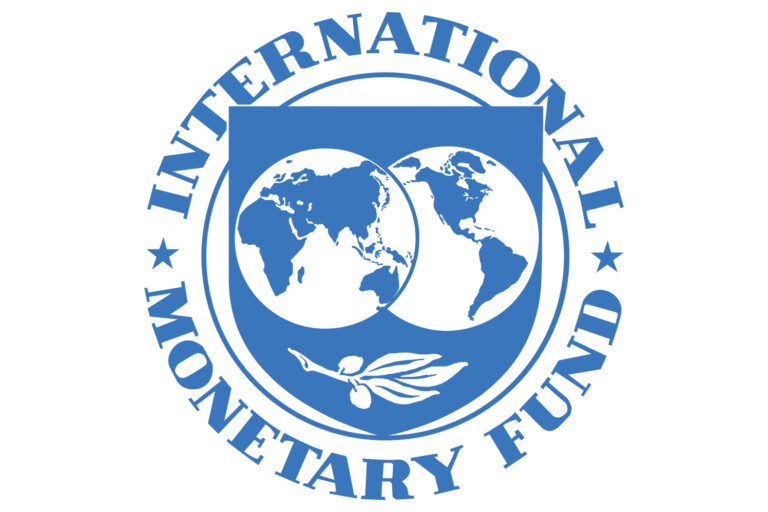Ministry of Trade and Regional Integration (MoTRI) announces that it will regulate cement factory gate prices every six months until demand and supply levels.
In a press conference held on Thursday December 22, 2022 Teshale Belhu, State Minister of the Ministry of Trade and Regional Integration (MoTRI), said that the Cement Marketing and Distribution Directive 908/2014 which allows the government to regulate the cement market has been revoked out with a new regulation emplaced.
“The former directive was approved to cope with illegal trading and to fill the gap on demand and supply. However, instead of stabilizing the market it has aggravated the problem, increasing illegal traders in the process,” explained the State Minister.
In the former directive the government has been trying to regulate the price of cement through measures such as setting fixed prices, limiting the volumes that individuals can buy and asking producers to cut distributors out of the supply chain.
In the former regulation, factories were supposed to sell to distributors which were selected by regional and city administrations. Through this, mega government projects and bid developers were said to have got priority in cement consumption.
The price of one quintal of cement was not more than 700 birr but now that narrative has shifted to over 2000 birr in the black market.
“Government will decrease its interaction in the cement market,” stated Teshale highlighting that the Ministry will monitor distributors to ensure that the transaction is completed in a valid way with receipts. However, the ministry will not set market price points.
To be effective as of December 22, 2022, the ministry has issued a new factory gate price. The price revision which is said to have been distributed to the factories has brought the price of one quintal of cement from 750 birr to 795 birr and looks to stay the same for the coming six month, according to the State Minister.
In the past two years, shortage of cement hit the market hard as factories production went down. Meanwhile, the government disclosed that it has taken several measures regarding cement distribution and its high price points. However things on ground seem different. It has been well noted that factories are working under production for reasons that stem from security, shortage of raw material as well as foreign currency.
According to the ministry, through there are about 11 cement factories, only three were properly in production mode. In the 2020/21 (2013 Ethiopian fiscal year) the total cement production in the country was 6.1 million quintals which dropped to 4.1 million quintals in 2021/22. The country’s production capacity is around 12Mt/yr.
Quite recently, even retailers in the city, contractors and builders shed light on heavy concerns to access cement even at twice its rate.
Contractors who are involved in different sized projects alarmed that they are engaged on building the backbone of the economy yet they face the hurdle of accessing cement.
In light of the cement despair, cement top guns, Dangote Cement disclosed that its sales from the Mugher plant rose by 1.8% year-on-year to 1.7Mt in the first nine months of 2022 and that the unit was running at full capacity in the third quarter. It reckoned that it held a 42% market share during this period, out of a total market of around 4.2Mt. Previously, it said that the total market for the whole year was 7Mt in 2021.
Trade Ministry steps in to regulate stiff cement market
Peace agreements spur investors to set base in industrial parks
Following the peace agreement between the government and the TPLF group to stop the conflict in the northern part, about 20 local and foreign companies have signed agreements with the Industrial Parks Development Corporation (IPDC) to invest in the industrial parks.
On Thursday December 22, 2022, the corporation signed an agreement with three manufacturing companies with a capital of more than 11 billion birr which are involved in producing pharmaceutical products, oxygen and nitrogen production, and printing. The contractual agreements were penned by Aklilu Tadese, the CEO of IPDC and the investing companies

The manufacturing companies, which will be put into production at Jimma and Kilinto Industrial Park and Addis Industrial Village are expected to create job opportunities for more than 600 citizens.
Gumsa Trading Plc which will invest in Kilinto Industrial Park took over 10,000sq plot of land to manufacture medicine packaging materials with an investment of 200 million dollars. The company is said to supply its products to local drug manufacturers, hospitals, importers and distributors as well as institutions engaged in the health sector. When it goes into operation Gumsa Trading Plc will create permanent job opportunities for more than 140 citizens.
Suji Liana Doo Oxygen; Nitrogen Manufacturing Plc is the second company which is engaged in the production of oxygen for the consumption of health institutions and has made an agreement to lease 800 square meters of land in Jimma Industrial Park. The company agreed to invest more than 206 million birr. Additionally the corporation has also signed agreement with Impact Printing and Graphics to rent a 1150 square meter production shed in Addis Industry Village at investments of more than 40 million birr.
Currently, there are about 125 both foreign and local investors working in the parks creating job opportunities for more than 81,000 citizens generating 1 billion dollar in annual revenue in the process. The parks are mostly given to investors in the textile and garment sectors who are known in generating hard currency and jobs.
Speaking at the signing ceremony, AkliluTadese, Chief Executive Officer of the IPDC said that the peaceful resolution of the law enforcement campaign in northern Ethiopia has stimulated increase in the flow of investment in industrial parks.
Ethiopia’s truce agreement forecasted to spring Djibouti economic activities
The truce agreed between the government and TPLF is stated by the International Monetary Fund (IMF) as a potential rejuvenator of Djibouti economic activities.
The statement IMF issued early last week recommended government to offer a significant share on the way to privatizing of Djibouti Telecom.
A team from the IMF led by Brett Rayner conducted an Article IV mission to Djibouti until mid-December.
In the statement that IMF issued Rayner said that the conflict in Ethiopia had weighed heavily on Djibouti’s economy, “the conflict saw renewed fighting this year, driving a further fall in port traffic after an already weak 2020 and 2021.”
In addition, higher commodity prices and regional drought have eroded households’ purchasing power and further reduced government revenue.
Accordingly, growth is expected to slow to 2.5 percent and the trade balance is projected to worsen in 2022.
The statement added that a truce agreed in November in Ethiopia could allow for a recovery in trade, reversing recent declines in port activity and help attract new foreign investment.
Projections cite that economic growth in Djibouti will recover in 2023 with a rebound in Ethiopia, and inflation would fall in line with international trends.
Like its neighbor Ethiopia, Djibouti has also embarked on a partial privatization of the state owned Djibouti Telecom. About a year ago, the government invited interested buyers for the sale of a significant minority stake – a 40 percent sale of the sole telecom operator.
On its latest statement, IMF said that with regards to the privatization of a minority stake in Djibouti’s Telecom low interest has been realized, “the authorities should be encouraged to consider offering a larger stake, as bringing in private investment could help reduce IT prices and expand access to mobile banking.”
“Supervision should keep pace with the rapid growth of the banking system, and while the currency board arrangement has provided the country with an effective nominal anchor and helped build confidence in international transactions, the authorities will need to introduce tools to make monetary policy more flexible,” the monetary fund agency added.
Rayner said that large investments over the past decade have driven strong economic growth, but the benefits have not been widely shared, “Djibouti has invested heavily in infrastructure connecting Ethiopia to global markets, driving growth to an average of 6.2 percent over 2013– 19, before the COVID crisis.”
He said that Djibouti’s key challenge is to adjust its growth model to reduce dependence on debt-financed investments while supporting an inclusive recovery from a series of external shocks.
“The authorities have responded to the shocks with a sharp fiscal consolidation and by accumulating arrears pending the outcome of ongoing restructuring negotiations with their main creditor, but spending needs are significant and debt service is set to increase further,” he further elaborated.
IMF recommended that however, to restore debt sustainability and support inclusive growth, it is essential to focus on domestic revenue mobilization and improve oversight of public enterprises.
The authorities should also rationalize subsidies by shifting to more targeted support measures. Governance and public financial management reforms will also be needed to preserve economic stability and create jobs.
Nile Insurance flows in waves of profit
Nile Insurance, one of the long established insurers since the sector opened for private operators, has registered massive success in the past financial year with profits bulging by 43 percent.
In the 2021/22 financial year that closed June 30, the company registered a positive performance in all aspects primarily on investment income while expenses like paid claims continued on a regular rise.
The general insurance premiums in the reporting period also expanded by 33 percent reaching 715 million birr up from 539 million birr in the preceding year.
Gross claims paid in account of the general insurance increased by 23 percent from 215.6 million birr of June 2021 to 265.7 million birr in the past financial year.
For the fiscal year under review, after reinsurance recoveries, the net claims paid amount stood at 244.5 million birr.
Claims incurred in the year have jumped by 46 percent from 199 million birr in the 2020/21 financial year to 291 million birr in 2021/22.
According to the annual report the loss ratio under general insurance for the period under review was 58.3 percent from almost 52 percent in the preceding year.

“The rise in spare parts costs of some new brand vehicles, repeated theft cases of vehicles, high frequency of claims for heavy trucks together with the significant rise in cabin change costs and others contributed for the rise in claims,” the report explained.
In the year, the underwriting surplus increased by 15 percent compared with the previous year and stood at 222.6 million birr.
In the long term aka life insurance business, the gross written premium rose by 15 percent towering at almost 67 million birr. The amount in the sub insurance business for the year was noted to be one of the biggest in the sector.
The company investment income grew by 59.2 percent to reach 146.3 million birr from 92 million birr a year earlier.
“Dividend obtained from the Bank of Abyssinia and Etho Re substantially rose by 132 percent from 30 million birr in 2020/21 to 69.3 million birr to the reported year,” the annual report explained how the investment income expanded dramatically.
In the reporting year, Nile amassed 227 million birr in profit before tax which is an increment of 43 percent compared with the performance a year ago. In the 2020/21 financial year, the company profit before tax was 158 million birr.
In similar trend, the profit after tax reached 197.5 million birr from 134.2 million birr of a year ago.
For the year, the earnings per share (EPS) increased by 22 percent and stood at 33.9 percent for par value of 1,000 birr which makes it one of the biggest in the sector.
The total asset of the company has increased by 30 percent to sit at 2.6 billion birr, while it’s paid up capital has increased by 29 percent capping at 646.4 million birr from 500 million birr a year ago.




